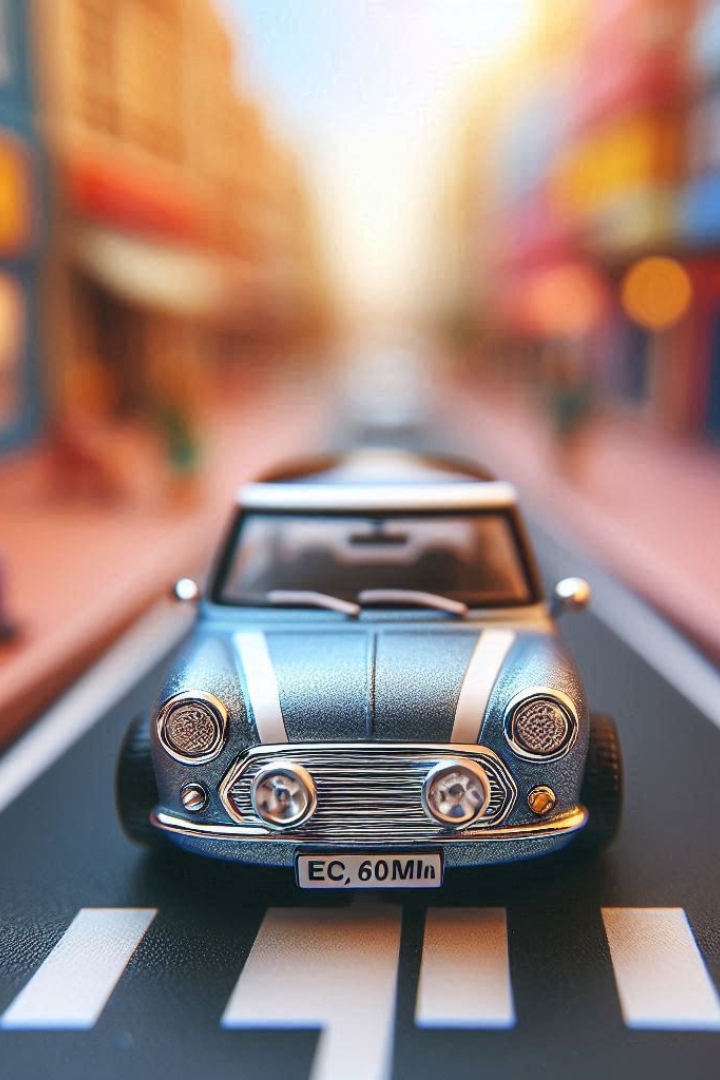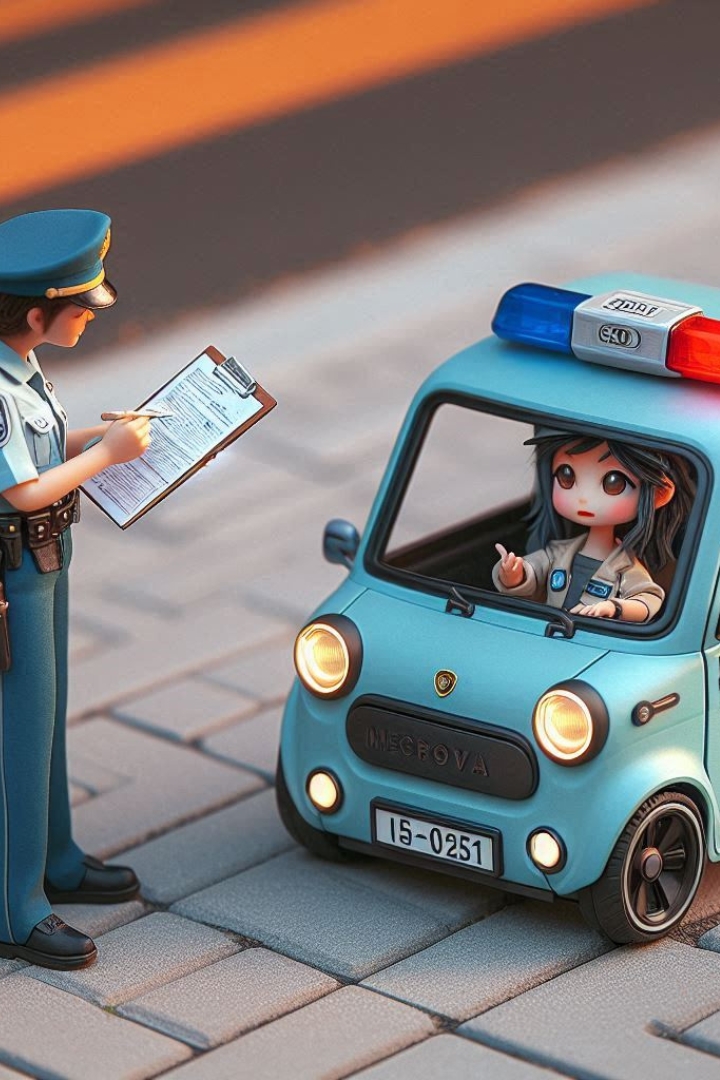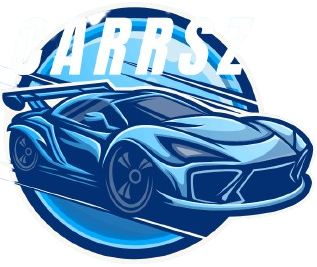Microcars: Little Ponders in a Major World 21
Table of Contents
- Microcars: Little Ponders in a Major World 21
- Presentation
- Authentic Outline
- Design and Engineering
- Challenges and Criticisms
- The Future of Microcars
- Mechanical Headways
- Market Patterns and Purchaser Inclinations
- Microcars and Urban Mobility
- Future Trends
- Mechanical Developments
- Lightweight Materials and Effectiveness
- Market Dynamics
- Microcars and the Future of Transportation
- FAQs about Microcars
Presentation
In this present reality where greater frequently appears to be better, microcar offer a reviving contrast. These somewhat little vehicles are intended to amplify proficiency, mobility, and reasonableness. In spite of the fact that their conservative size could recommend restricted utility, microcar have cut out a specialty that features development, manageability, and common sense. This article investigates the set of experiences, plan, advantages, and future of microcar, digging into their effect on metropolitan portability and the auto business.
Authentic Outline
The Starting points of Microcars
The idea of the microcar traces all the way back to the mid twentieth century when the requirement for prudent and proficient vehicles became obvious. The expression “microcar” acquired noticeable quality in the post-The Second Great War period when European makers started delivering little, reasonable vehicles to address fuel deficiencies and financial imperatives.
One of the earliest models was the German BMW Isetta, presented in 1954. The Isetta, warmly known as the “Air pocket Vehicle,” was planned with a solitary front entryway that opened like an egg. It offered an answer for the post-war fuel emergency, giving a practical and productive method of transportation. The presented in 1957, turned into a symbol of Italian plan and common sense. Its minimal size and proficient motor made it ideal for exploring swarmed metropolitan roads. The Citroën 2CV, or “Deux Chevaux,” was one more compelling model, known for its effortlessness and adaptability.
In the Unified Realm, the Little, sent off in 1959 by the English Engine Partnership (BMC), upset the idea of little vehicles. Its inventive utilization of room and dealing with qualities made it a dearest symbol and set another norm for microcar. The Little’s prosperity showed the way that little vehicles could offer both reasonableness and driving delight.

Design and Engineering
Space Effectiveness
One of the most noteworthy parts of microcar is their capacity to take full advantage of room. Originators and designers utilize different systems to expand inside space while keeping a minimal outside. For example, microcar frequently include a front-motor, front-wheel-drive design, which takes into consideration a more roomy lodge.
The utilization of lightweight materials is additionally pivotal in microcar plan.
Streamlined features and Security
Microcar should adjust streamlined features and security inside their restricted aspects. Many models highlight smoothed out shapes to lessen drag and further develop eco-friendliness. The plan of microcar frequently incorporates highlights, for example, adjusted edges and low-threw profiles to improve streamlined execution.
Wellbeing is a critical worry for microcar producers, given their little size and lightweight development. Current microcar are furnished with cutting edge wellbeing highlights, for example, airbags, non-freezing stopping mechanisms (ABS), and electronic strength control (ESC). Furthermore, the presentation of fold zones and built up structures assists with safeguarding tenants in case of an impact.
Challenges and Criticisms
Restricted Space and Execution
Regardless of their many benefits, microcar have constraints. Their little size can mean restricted freight space and decreased traveler solace contrasted with bigger vehicles. Also, some microcar have lower power yields, which can influence their exhibition and capacity to stay aware of expressway traffic.
Wellbeing Concerns
The little size of microcars can likewise raise wellbeing concerns. While current microcars are outfitted with different security highlights, they are innately less crashworthy than bigger vehicles. Drivers and travelers in microcars might be more weak in high velocity impacts or mishaps with bigger vehicles.

The Future of Microcars
Mechanical Headways
The future of microcar is probably going to be molded by progressing mechanical headways. Developments in electric and independent vehicle innovations could assume a critical part in the development of microcar Electric microcar, specifically, offer the potential for zero-emanation transportation and decreased ecological effect.
Independent driving innovation could likewise improve the allure of microcar by addressing concerns connected with security and accommodation. As self-driving innovation keeps on creating, microcar may turn into an indispensable piece of metropolitan versatility arrangements, offering effective and harmless to the ecosystem transportation choices.
Market Patterns and Purchaser Inclinations
Purchaser inclinations and market patterns will likewise impact the future of microcar. As urban communities become more clogged and natural worries develop, the interest for reduced and productive vehicles is probably going to increment. Makers should adjust to changing buyer needs and inclinations, offering microcars that balance reasonableness, execution, and supportability.
Types of Microcars
Microcars come in different sorts, each with exceptional qualities customized to various necessities and inclinations.
City Vehicles
City vehicles are planned basically for metropolitan conditions. They are smaller, profoundly flexibility, and proposition a harmony between proficiency and reasonableness. Models like the Fiat 500 and Small scale Cooper fall into this class. They are known for their smart plan and are in many cases utilized as everyday suburbanites in urban communities.
Bubble Vehicles
Bubble vehicles, like the BMW Isetta and Messerschmitt KR200, are portrayed by their particular, adjusted shapes. These vehicles were well known during the 1950s and 1960s and are currently viewed as exemplary instances of microcar plan. They were much of the time three-haggled moderate elements, which made them reasonable and effective.
Electric Microcars
Electric microcars are a cutting edge emphasis of the exemplary microcar, fueled completely by electric engines. They address ecological worries and deal zero outflows. The Shrewd EQ ForTwo and Renault Twizy are noticeable models. These vehicles are great for little excursions and metropolitan driving, where their smaller size and electric drivetrain give huge benefits.
Quadricycles
Quadricycles are a classification of microcar that is legitimately particular from conventional vehicles in certain nations. They ordinarily have a maximum velocity of around 45 km/h (28 mph) and are ordered uniquely in contrast to customary cars. The Renault Twizy is a striking illustration of a quadricycle, offering an outdoors driving involvement in a moderate plan.

Notable Models
BMW Isetta
Its single front entryway and egg-formed plan made it quickly unmistakable., the Isetta turned into an image of post-war financial effectiveness.
. Its plan, made by Dante Giacosa, was both viable and snappy. The was known for its minimal aspects, reasonableness, and eco-friendliness. It stays a darling work of art and has seen a few current emphasess, keeping up with its appeal while integrating contemporary innovation.
Savvy ForTwo
The Savvy ForTwo, presented in 1998, is a cutting edge take on the microcar. Its minimized plan, with a length of simply over 2.5 meters (8.2 feet), makes it ideal for city driving. The Savvy ForTwo has developed throughout the long term, with electric variants offering a maintainable option to conventional microcars.
Renault Twizy
. With its outdoors plan and electric drivetrain, the Twizy gives a one of a kind driving encounter. It is especially well known in metropolitan conditions and for brief distance travel.
Microcars and Urban Mobility
Tending to Metropolitan Difficulties
Microcars are especially appropriate to address the difficulties of current metropolitan living. Urban communities all over the planet are wrestling with gridlock, stopping deficiencies, and natural contamination. Microcars offer an answer by giving a space-productive and harmless to the ecosystem method of transportation.
Their little size permits them to explore through clogged traffic and park in restricted spaces, lessening the pressure related with city driving. Moreover, electric microcars add to diminishing metropolitan air contamination, lining up with worldwide endeavors to battle environmental change.
Combination with Public Transportation
Microcars can supplement public transportation frameworks by giving first-mile and last-mile network. For instance, they can be utilized to go between a public travel station and a last objective. This incorporation assists with making a more consistent and proficient transportation organization, decreasing the dependence on confidential vehicles.
Future Trends
Developments in Microcar Plan
The future of microcars will probably be molded by continuous developments in plan and innovation. Propels in battery innovation, independent driving, and network are supposed to impact the advancement of microcars. Electric microcars will keep on acquiring conspicuousness, driven by the worldwide push towards practical transportation.
Strategy and Guideline
Government strategies and guidelines will assume a significant part coming soon for microcars. Motivators for electric vehicles, changes in emanations guidelines, and metropolitan arranging drives will affect the reception and advancement of microcars. Policymakers should adjust the advantages of microcars with contemplations connected with wellbeing, framework, and natural effect.
Mechanical Developments
Battery Innovation and Reach
Progressions in battery innovation are critical for the fate of electric microcars. Current lithium-particle batteries offer better energy thickness, which means more prominent reach and execution. Producers are putting resources into examination to foster much more proficient batteries, for example, strong state batteries, which guarantee higher energy densities and quicker charging times.
The scope of electric microcars has worked on throughout the long term, making them more functional for day to day use. For instance, the most recent cycles of the Brilliant EQ ForTwo offer a scope of as much as 130 kilometers (81 miles) on a solitary charge, adequate for most metropolitan drives. As battery innovation keeps on propelling, electric microcars will turn out to be progressively practical for longer excursions and a more extensive scope of purpose cases.
Independent Driving and Network
Independent driving innovation can possibly alter microcars. While completely independent microcars are still being developed, progressions in driver-help frameworks are as of now upgrading wellbeing and comfort. Elements, for example, versatile voyage control, path keeping help, and programmed crisis slowing down are becoming norm in numerous new microcars.
Network is one more area of development. Microcars are progressively furnished with brilliant advancements, including infotainment frameworks, GPS route, and network with versatile applications. These elements work on the driving experience and incorporate microcars into the more extensive biological system of shrewd transportation.
Lightweight Materials and Effectiveness
Microcar producers are investigating new materials to upgrade vehicle execution and proficiency. High level composites, like carbon fiber and high-strength plastics, are utilized to decrease weight while keeping up with underlying respectability. This outcomes in better eco-friendliness and execution.
Furthermore, streamlined upgrades are utilized to lessen drag and increment productivity. The plan of microcars frequently incorporates highlights, for example, smooth, adjusted edges and coordinated spoilers to improve wind current and limit opposition.
Market Dynamics
Buyer Inclinations
Buyer inclinations assume a huge part in molding the microcar market. Factors like eco-friendliness, natural effect, and cost-adequacy drive interest for microcars. As attention to ecological issues develops, there is a rising interest in electric microcars and other economical transportation choices.
Plan and style likewise impact purchaser decisions. Microcars are frequently planned with an emphasis on feel and personalization, interesting to purchasers who look for an extraordinary and a la mode vehicle. This pattern is clear in models like the and Smaller than normal Cooper, which offer a scope of customization choices to suit individual preferences.
Serious Scene
The microcar market is serious, with different producers competing for portion of the overall industry. Laid out car brands like Fiat, BMW, and Renault proceed to enhance and present new models. Simultaneously, new contestants and new businesses are investigating specialty markets and offering exceptional arrangements.
Electric microcars have gotten forward momentum lately, prompting expanded rivalry in this section. Organizations like Savvy, Renault, and new players in the electric vehicle market are creating and advertising electric microcars to fulfill developing need.

Microcars and the Future of Transportation
Metropolitan Versatility Arrangements
Microcars are progressively viewed as an answer for metropolitan versatility challenges. Urban communities all over the planet are executing approaches to lessen clog and contamination, and microcars line up with these objectives. Their conservative size permits them to explore clogged roads and park in restricted spaces, easing stopping deficiencies and lessening gridlock.
Microcars can likewise coordinate with different types of transportation, for example, public travel and bicycle sharing projects. This incorporation makes a more consistent and effective transportation organization, permitting people to consolidate various methods of transport for a more helpful and maintainable travel insight.
Savvy Urban communities and Framework
As urban communities develop into savvy urban areas, microcars will assume a part in molding the fate of metropolitan transportation. Savvy city foundation, including associated streets, astute traffic the board frameworks, and electric vehicle charging networks, will upgrade the usefulness and productivity of microcars.
For instance, savvy stopping frameworks can assist drivers with finding accessible parking spaces, lessening the time spent looking for stopping and diminishing clog. Also, the improvement of far and wide and open charging foundation is urgent for the reception of electric microcars.
FAQs about Microcars
-
What is a microcar?
A microcar is a small, compact vehicle designed for efficient urban transportation. Typically characterized by its small size and economical features, microcar are often used for short-distance travel and are ideal for navigating congested city streets. They generally have a smaller engine and are more fuel-efficient compared to larger vehicles.
-
What are the main types of microcars?
Microcars come in several types, including:
- City Cars: Compact vehicles designed for urban driving, such as the Fiat 500 and Mini Cooper.
- Bubble Cars: Historical models with distinctive, rounded shapes, like the BMW Isetta and Messerschmitt KR200.
- Electric Microcars: Vehicles powered by electric motors, such as the Smart EQ ForTwo and Renault Twizy.
- Quadricycles: Lightweight, low-speed vehicles classified differently from traditional cars, such as the Renault Twizy.
-
Are microcars safe?
Microcar are designed with safety features, including airbags, anti-lock braking systems (ABS), and electronic stability control (ESC). However, due to their small size, they are generally less crashworthy than larger vehicles. Manufacturers are continually improving safety technologies, but it’s important for drivers to be aware of the inherent risks associated with smaller vehicles.
-
What are the benefits of owning a microcar?
The benefits of owning a microcar include:
- Fuel Efficiency: Microcar are often more fuel-efficient than larger vehicles, reducing the cost of fuel.
- Parking: Their compact size makes it easier to find parking in crowded urban areas.
- Affordability: Microcar typically have a lower purchase price and insurance costs.
- Environmental Impact: Electric microcar produce zero emissions, contributing to reduced air pollution.
-
How far can electric microcars travel on a single charge?
The range of electric microcars varies by model. For example:
- The Smart EQ ForTwo offers a range of up to 130 kilometers (81 miles) on a single charge.
- The Renault Twizy has a more limited range of about 50-60 kilometers (31-37 miles) due to its smaller battery.
As battery technology continues to advance, the range of electric microcar is expected to improve.
-
Can microcars be used for long-distance travel?
Microcar are primarily designed for short-distance urban travel. While some models may be capable of longer trips, they are not typically suited for extended journeys due to their limited range and smaller size. For long-distance travel, larger vehicles with greater comfort and range are generally preferred.
-
Are microcars environmentally friendly?
Microcar can be environmentally friendly, especially when they are electric. Electric microcar produce zero tailpipe emissions and contribute to reducing urban air pollution. Traditional microcar with small internal combustion engines are more fuel-efficient than larger vehicles, but they still produce some emissions. The environmental impact of microcar depends on their fuel source and usage.
-
What are the legal requirements for driving a microcar?
Legal requirements for driving a microcar vary by country and region. Generally, drivers need a valid driver’s license and must adhere to specific regulations related to vehicle safety and emissions. Some countries have specific classifications and regulations for microcars and quadricycles. It’s important to check local laws to ensure compliance with all requirements.
-
Can microcars be used for car-sharing or ride-sharing services?
Yes, microcars can be used for car-sharing and ride-sharing services. Their compact size and affordability make them suitable for these services, particularly in urban areas where space and cost are considerations. Some car-sharing programs and ride-sharing services incorporate microcars into their fleets to offer more options to users.
-
What is the future of microcars?
The future of microcars looks promising, with ongoing advancements in technology and growing interest in sustainable transportation. Innovations in electric vehicle technology, autonomous driving, and smart city infrastructure are likely to influence the development of microcars. As urbanization continues and environmental concerns grow, microcars will play an increasingly important role in providing efficient and sustainable transportation solutions.
